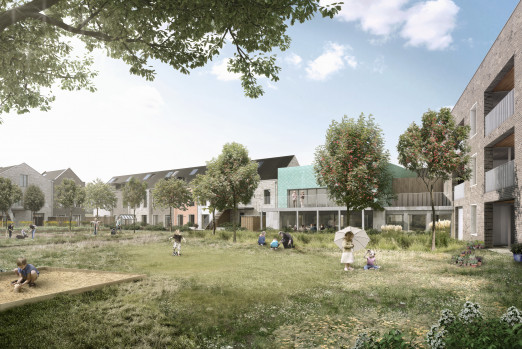Architects, Planners and Designers who attended the Co-Housing debate at The Building Centre might want to cast an eye over Enzo Manzini’s Design, When Everyone Designs: An Introduction to Design for Social Innovation. Manzini’s book covers some key drivers in the world of planning and design, not least the growing interest in collaborative housing. But most of all it’s a book that marks that sits on the cusp of where and how we might reframe architecture, citizenship and cities. Manzini is a design strategist and reknowned thinker on social innovation and design (he founded DESIS), is Honorary Professor at the Politecnico di Milano, and Chair Professor at University of the Arts London.

(Manzini speaking at Central Saint Martin's, London)
Manzini’s intro pitch reworks the notion of sustainability, making it a feature of how we create and recreate our everyday life. Sustainability means, in effect, “a world in which everybody constantly has to design and redesign their existence, whether they wish to or not.” For some, such as those attending the Co-Housing debate (from citizens to the architects), redesigning social interaction and the role of the architect is the productive way to reacting to formidable social change: in the demographics of an ageing population; in response to the lack of affordable housing; as a way of seeing and making opportunity in the withdrawal of funding by the State. The idea of the expanded architect was also a feature of Assemble’s Turner Prize-winning project in Liverpool, the expanded architect as an enabler.

(Manzini speaking at Central Saint Martin's, London)
Such projects are examples of a ‘distributed’ rather than ‘centralized’ or hierarchical system which gives co-housing projects their adaptability and resilience. Manzini highlights the idea of resilience, arguing that it is a crucial component for a world that will be regularly impacted in serious ways. “For a long time, we have known that whatever our future society will be, it will be a ‘risk society’ – a society likely to be affected by different kinds of traumatic events (from natural catastrophes to war and terrorism, to financial and economic crisis).” Indeed, in order to extract something useful form the discourse of resilience, repositioning from qualities that are reactive, to a way of rethinking the relationship between human beings and “the complexity of our world” – resilience as an ongoing process of transformation rather than the capacity of returning to an original state or form.
Abstracting from the case studies and examples Manzini gives in the book, and from a recent talk he gave on the book and the current refugee crisis, this new expression of resilience would include: adaptability; learning; and an ability to re-think given frameworks. Or in other words, design for social innovation. Those of us who heard Maria Brenton from Older Women’s Co-Housing talk at the recent Building Centre event, will recognize Manzini’s observation around grassroots organisations that “Larger groups of people are being asked to cultivate their design capacity, and becoming more competent in doing it.” Manzini gives the example of collaborative housing initiatives developed by the DESIS lab and the Politecnico di Milano: each project functions as an ongoing knowledge resource to be used across different schemes. Other collaborative neighbourhood projects he looks at include include “Living Lab the Neighbourhood" in Malmö, Sweden, and “Via Scarsellini”, a collaborative living project in Milan.
Indeed, at the talk highlighting his book and how cities could respond to the current refugee crisis, Manzini cited collaborations such as The Bike Project in London, whereby refugees fix donated bikes and help other refugees get mobile – it creates a new sociality, helping people use skills which have formed their sense of self.
Manzini sees the design of such projects as the popularly-named airbnb for refugees (Refugees Welcome), set up by graphic designer Jonas Jonas Kakoschke and Mareike Geiling, and now a popular model elsewhere – designing a system to reallocate existing resources.
What Manzini’s book highlights is how we will need to think about the built environment in radically new ways. Problems such as housing, health and refugees are only irresolvable if we fail to open up the design process.
John O'Reilly
Design, When Everybody Designs is published by MIT
A useful resource is the Sustainable Everyday Project, which Ezio Manzini co-produced with François Jégou, the director of Strategic Design Scenarios.

